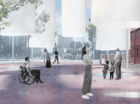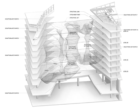
Engineering Artistry
From the monumental Picasso sculpture in Chicago’s Daley Plaza, to Isamu Noguchi’s Red Cube in Lower Manhattan, SOM’s history of integrating iconic artworks into a wide variety of building sites is well documented. Perhaps less known, however, is the role that engineers have played in helping to realize various works of art. In some cases, SOM has developed structural engineering solutions for executing the artist’s vision. In others, an exploration of technical issues has led the artist to refine or expand their ideas.
Over the past decade, SOM’s structural engineers have developed tools, techniques, and approaches that have enhanced the impact of public art installed around the world—from a university campus in Omaha, Nebraska, to the lobby of the world’s tallest building in Dubai.
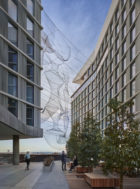
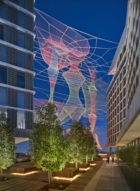
Janet Echelman “Dream Catcher” (2017)
Known for her colorful fiber net sculptures, Janet Echelman describes her installations as a “team sport,” with contributions from engineers, architects, and more. When she was commissioned to create a public artwork for The Jeremy Hotel in West Hollywood, Echelman envisioned a sculpture suspended above an open-air plaza between the hotel’s two buildings on the Sunset Strip. As the architects and engineers for the project, SOM worked closely with Echelman to seamlessly integrate the artwork into the new development.
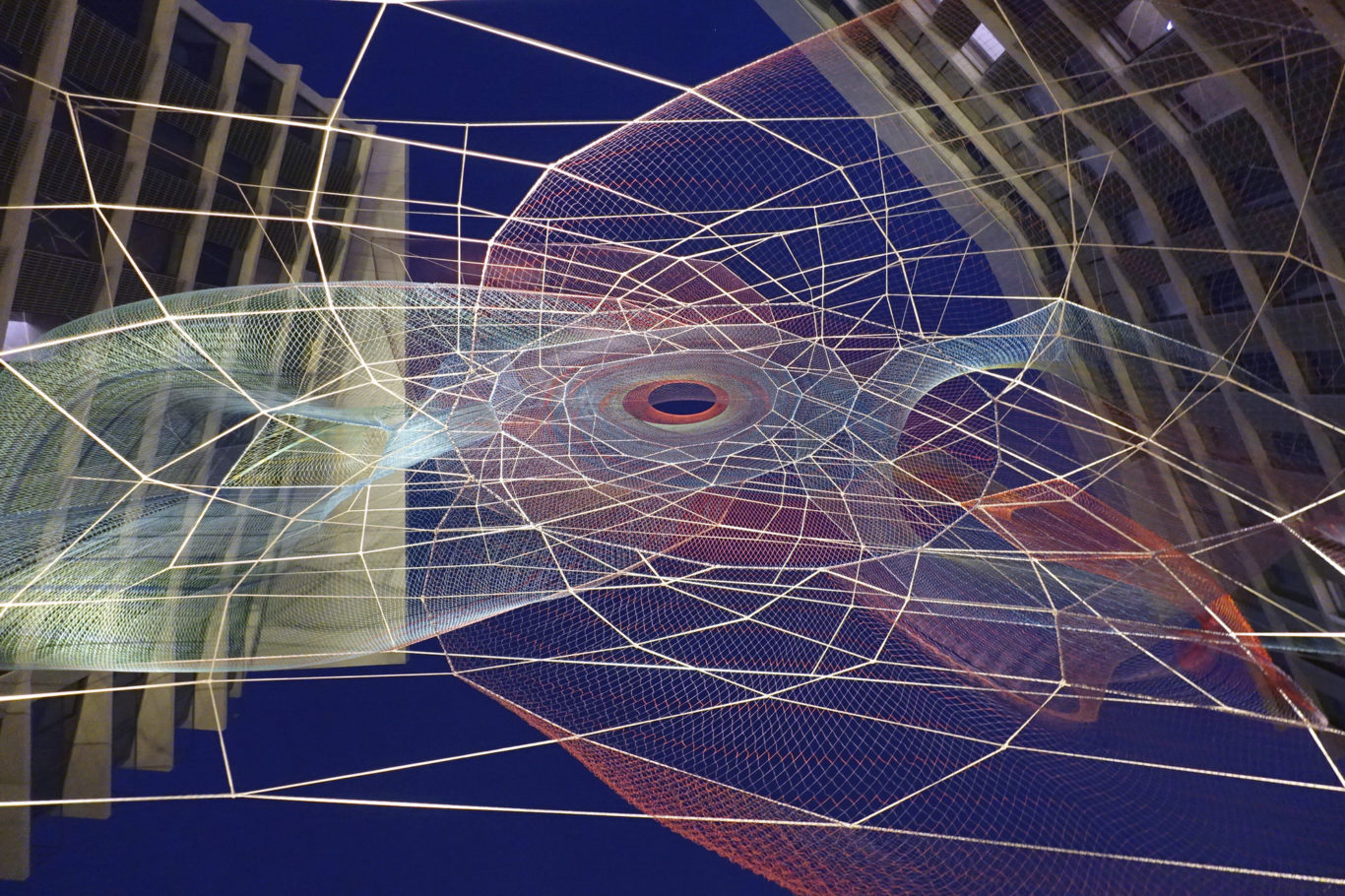
Structure Taking Shape
Titled “Dream Catcher,” the sculpture is inspired by the idea of dreaming hotel guests—its interweaving forms of fiber netting are modeled after brainwave activity that occurs during dream states. Suspended 100 feet in the air, the translucent sculpture turns The Jeremy’s plaza into a dynamic and ethereal public space, while making a striking contribution to the streetscape of West Hollywood.
Echelman’s sculpture is laced directly into the structure of the two ten-story buildings. To stabilize the hanging nets, SOM developed a four–tiered support system with ropes anchored into the building’s floor plates. The team also helped adapt the geometry of Echelman’s design, derived from a traditional dreamcatcher pattern, to fit the unique contours of the site.

Iñigo Manglano–Ovalle’s “Weather Field No. 1” (2013)
At the heart of Tongva Park in Santa Monica, California, Iñigo Manglano–Ovalle’s “Weather Field No. 1” merges creative form with scientific function. This kinetic sculpture consists of 49 stainless steel poles topped with instruments that measure wind speed and direction. The instruments, called anemometers, move with the wind to create beautiful “flocking” patterns. SOM worked with Manglano-Ovalle to execute this deceptively complex artwork.
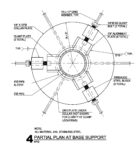
Ground Work
Because each of the 49 poles varies in height and diameter, multiple structural evaluations and dynamic analyses were needed. SOM used an advanced wind engineering approach to account for turbulence caused by the stepped arrangement of the poles, as well as for strains at the connection point between pole and base. As an alternative to welded connections, which would pose a risk for structural fatigue, the team developed a simple but effective clamping system—not unlike a Christmas tree stand. Close collaboration between artist, engineer, and fabricator was key to the creative development and successful installation of this memorable piece of public art.
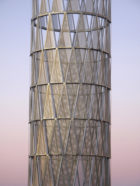
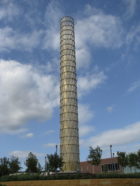
James Carpenter “Hope Tower” (2011)
SOM has worked with designer James Carpenter on a number of projects to enhance the experience of architecture with his distinctive, light-based installations. In 2011, SOM collaborated with Carpenter’s firm on “Hope Tower,” a 120–foot-tall public artwork that plays off of the dramatic natural qualities of the Nebraska sky. Located on campus at the University of Nebraska Medical Center, the tower’s rational structure reflects the school’s scientific character.
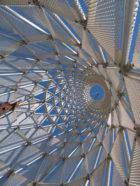
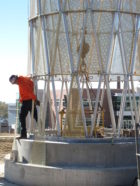
A Balancing Act
Led by partner William F. Baker, SOM engineers worked closely with James Carpenter Design Associates to address wind forces, which could cause the slender tower to sway. The design features hundreds of perforated, triangular panels of titanium-coated stainless steel, fitted into a diagrid frame. After numerous geometric studies to account for sway, weight, and gravity, the design team increased the number of perforations in the tower’s paneled skin proportional to its height. This created a structure that is more than three times as porous at its apex than its base, which increases its overall stability.
SOM’s work on the structure, meanwhile, allowed Carpenter to focus on the tower’s relationship to light. The steel panels are designed to reflect sunlight and atmosphere at different times of the day; by night, internal illumination transforms the tower into a lantern. Since its installation, “Hope Tower” has become a beacon on the campus and a gathering place for students, faculty, and visitors alike.
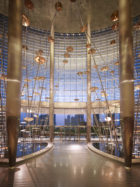
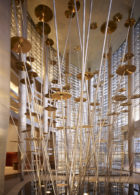
Jaume Plensa “World Voices” (2010)
Designed and engineered by SOM, the Burj Khalifa in Dubai stands as the world’s tallest built structure. To match the tower’s massive scale, SOM also led the development of a comprehensive art program. After soliciting concepts from artists around the world to create a centerpiece for the tower’s residential lobby, SOM eventually selected Jaume Plensa, whose acclaimed body of work includes the interactive “Crown Fountain” in Chicago’s Millennium Park.
Plensa’s creation for the Burj Khalifa, titled “World Voices,” is a dynamic installation consisting of 196 hand-crafted cymbals attached to slender stainless steel tubes, which sprout from two shallow pools of water. Special equipment mounted within the ceiling slowly drips water onto the cymbals, producing an ambient soundscape within the lobby.
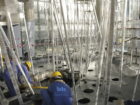
Hidden Platform
Resembling a field of reeds, the tall and densely clustered vertical elements required careful consideration about how to install the piece. SOM worked with Plensa to perfect a structurally sound base (invisibly submerged within the pools), as well as the design of the tubes themselves. Staggered throughout the height of the lobby, the 196 cymbals of “World Voices” represent the number of countries in the world: a symbol of international collaboration befitting the Burj Khalifa’s status as a global icon.
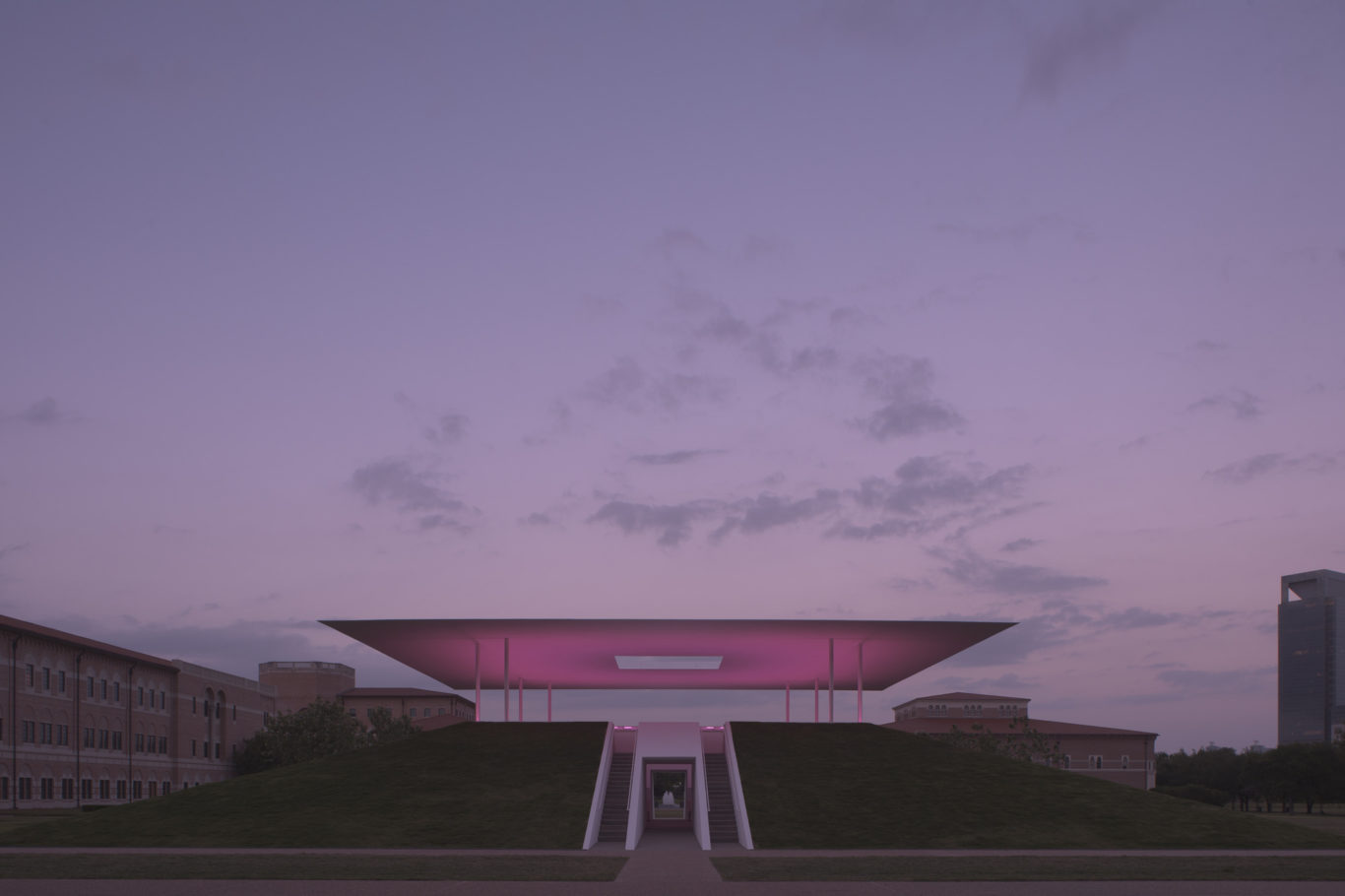
James Turrell “Twilight Epiphany” (2012)
For two decades, SOM has turned to legendary artist James Turrell to bring his distinctive focus on light and space into projects such as the Greenwich Academy Upper School in Connecticut. Reciprocating this longstanding relationship, Turrell approached SOM in 2012 to assist with the engineering of one of his “skyspace” projects at Rice University in Houston.
This permanent outdoor installation, titled “Twilight Epiphany,” belongs to a series of conceptually similar works installed across the world. It consists of a chamber embedded within a man-made hill, covered overhead by a roof with a large square aperture. The design creates a frame through which to gaze upon the Texas sky, and features carefully orchestrated LED light shows at sunrise and sunset—often accompanied by prerecorded compositions or live musical performances.
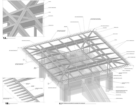
Structural Illusion
To heighten the structure’s ethereal qualities, Turrell’s design called for sight lines that never reveal the roof’s top surface from within the viewing space. Minimizing the depth of the roof framing was critical to achieving this unusual effect. The team created a supportive structure that allows for a gentle, imperceptible slope, which continues to taper off several feet beyond the primary steel until it meets at a knife-edge with the surface. The hidden frame creates a perception of the roof as a two-dimensional object, nearly floating above the mysterious earthwork and viewing chamber below. Made possible by merging artistic vision with structural expertise, “Twilight Epiphany” has become a treasured public venue and a singular contribution to Houston’s cultural life.


